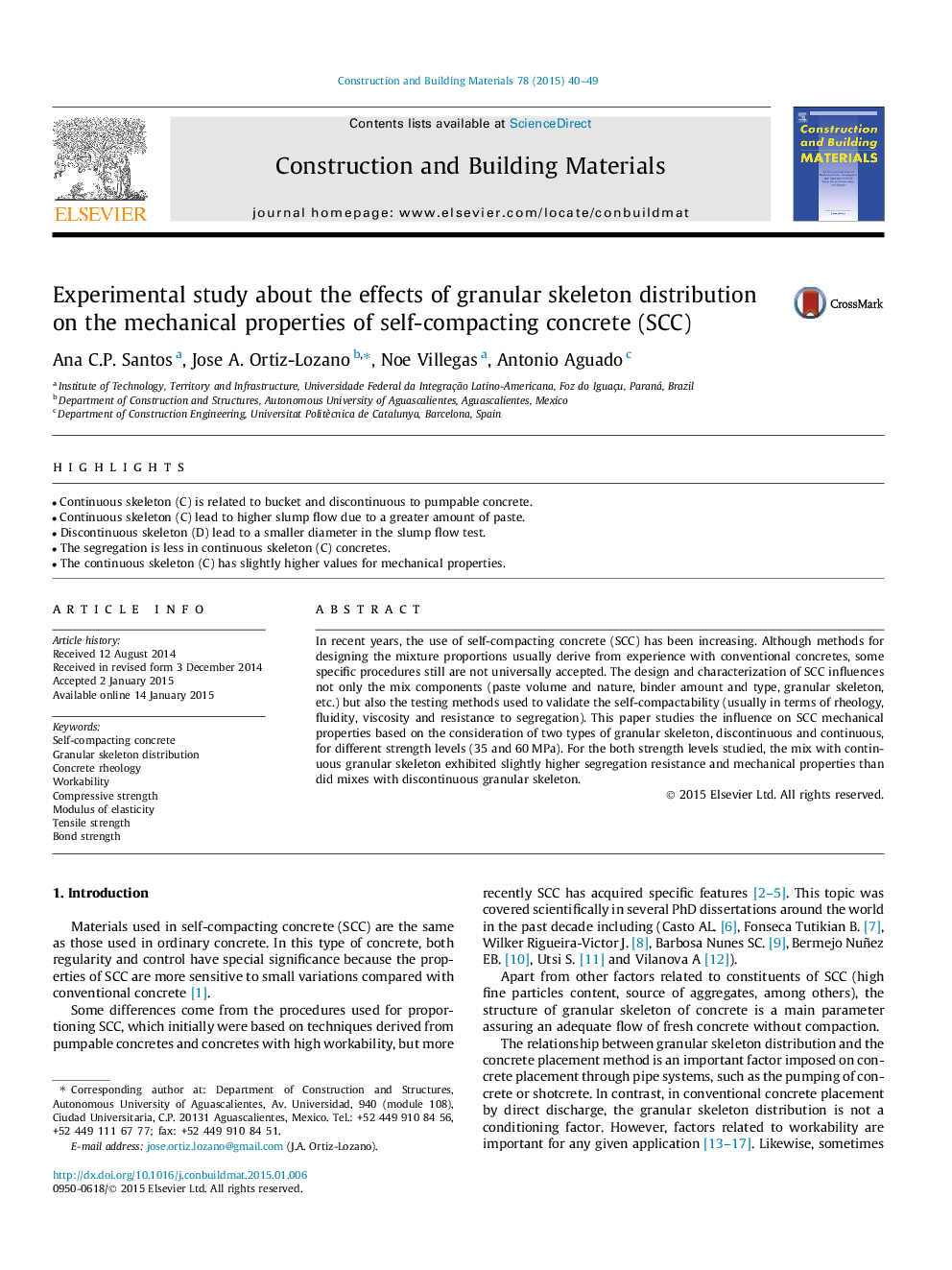| کد مقاله | کد نشریه | سال انتشار | مقاله انگلیسی | نسخه تمام متن |
|---|---|---|---|---|
| 257091 | 503577 | 2015 | 10 صفحه PDF | دانلود رایگان |

• Continuous skeleton (C) is related to bucket and discontinuous to pumpable concrete.
• Continuous skeleton (C) lead to higher slump flow due to a greater amount of paste.
• Discontinuous skeleton (D) lead to a smaller diameter in the slump flow test.
• The segregation is less in continuous skeleton (C) concretes.
• The continuous skeleton (C) has slightly higher values for mechanical properties.
In recent years, the use of self-compacting concrete (SCC) has been increasing. Although methods for designing the mixture proportions usually derive from experience with conventional concretes, some specific procedures still are not universally accepted. The design and characterization of SCC influences not only the mix components (paste volume and nature, binder amount and type, granular skeleton, etc.) but also the testing methods used to validate the self-compactability (usually in terms of rheology, fluidity, viscosity and resistance to segregation). This paper studies the influence on SCC mechanical properties based on the consideration of two types of granular skeleton, discontinuous and continuous, for different strength levels (35 and 60 MPa). For the both strength levels studied, the mix with continuous granular skeleton exhibited slightly higher segregation resistance and mechanical properties than did mixes with discontinuous granular skeleton.
Journal: Construction and Building Materials - Volume 78, 1 March 2015, Pages 40–49